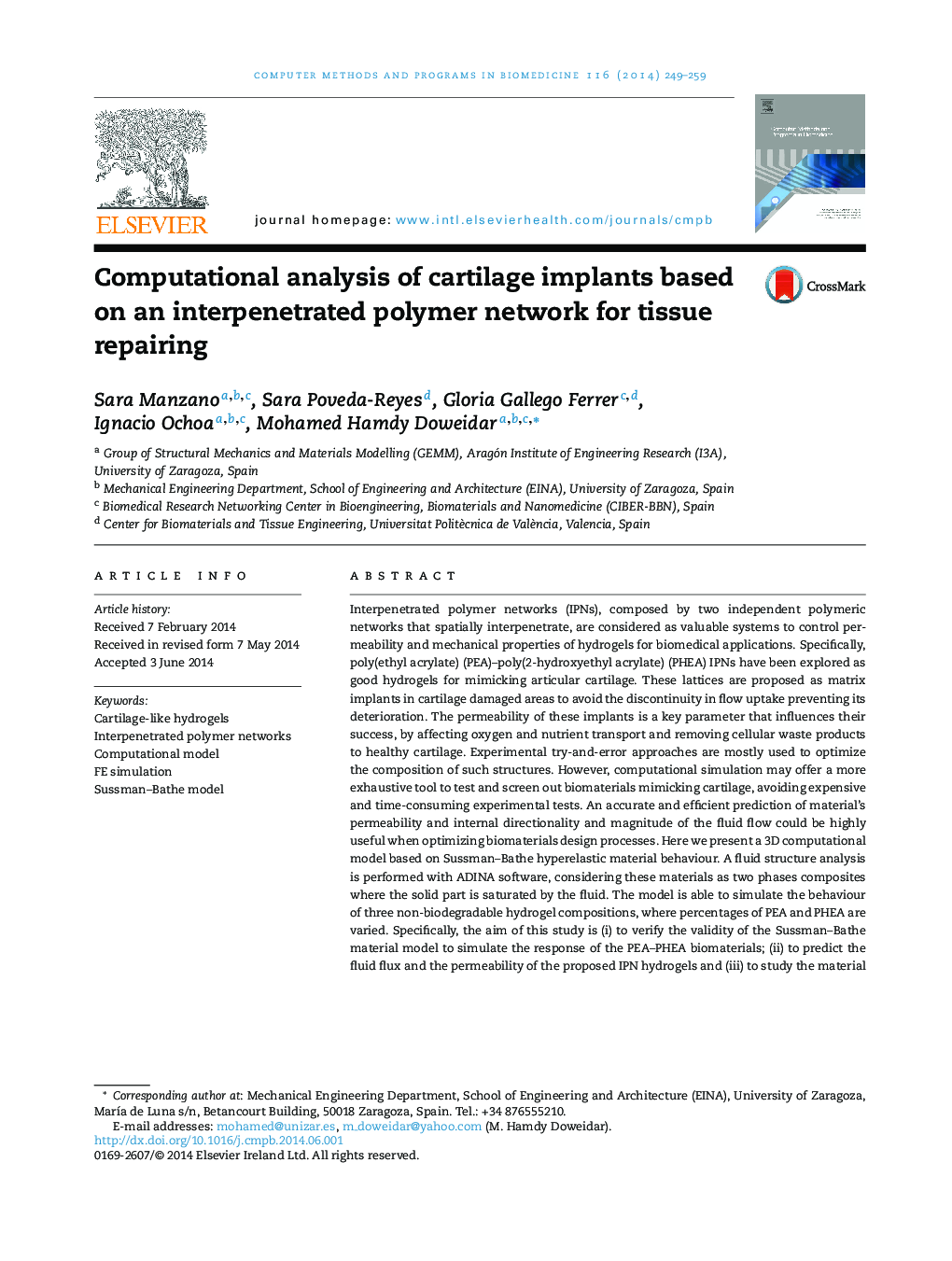| Article ID | Journal | Published Year | Pages | File Type |
|---|---|---|---|---|
| 466453 | Computer Methods and Programs in Biomedicine | 2014 | 11 Pages |
•A 3D computational model to study the behaviour of interpenetrated polymer networks (IPNs) for cartilage repairing is proposed.•The model can predict the permeability of the poly(ethyl acrylate) (PEA)–poly(2-hydroxyethyl acrylate) (PHEA) IPNs.•The model is able to simulate the internal distribution and quantification of fluid flux of the two phases composite.•The model enables us to study the nutrient supply within the different biomaterial regions.
Interpenetrated polymer networks (IPNs), composed by two independent polymeric networks that spatially interpenetrate, are considered as valuable systems to control permeability and mechanical properties of hydrogels for biomedical applications. Specifically, poly(ethyl acrylate) (PEA)–poly(2-hydroxyethyl acrylate) (PHEA) IPNs have been explored as good hydrogels for mimicking articular cartilage. These lattices are proposed as matrix implants in cartilage damaged areas to avoid the discontinuity in flow uptake preventing its deterioration. The permeability of these implants is a key parameter that influences their success, by affecting oxygen and nutrient transport and removing cellular waste products to healthy cartilage. Experimental try-and-error approaches are mostly used to optimize the composition of such structures. However, computational simulation may offer a more exhaustive tool to test and screen out biomaterials mimicking cartilage, avoiding expensive and time-consuming experimental tests. An accurate and efficient prediction of material's permeability and internal directionality and magnitude of the fluid flow could be highly useful when optimizing biomaterials design processes. Here we present a 3D computational model based on Sussman–Bathe hyperelastic material behaviour. A fluid structure analysis is performed with ADINA software, considering these materials as two phases composites where the solid part is saturated by the fluid. The model is able to simulate the behaviour of three non-biodegradable hydrogel compositions, where percentages of PEA and PHEA are varied. Specifically, the aim of this study is (i) to verify the validity of the Sussman–Bathe material model to simulate the response of the PEA–PHEA biomaterials; (ii) to predict the fluid flux and the permeability of the proposed IPN hydrogels and (iii) to study the material domains where the passage of nutrients and cellular waste products is reduced leading to an inadequate flux distribution in healthy cartilage tissue. The obtained results show how the model predicts the permeability of the PEA–PHEA hydrogels and simulates the internal behaviour of the samples and shows the distribution and quantification of fluid flux.
